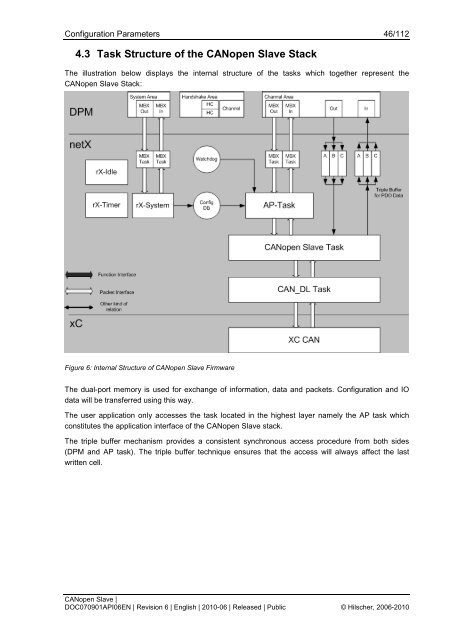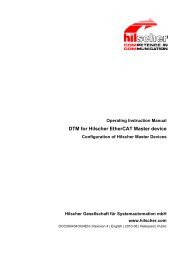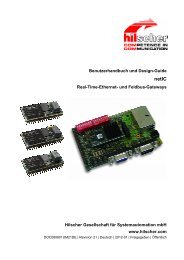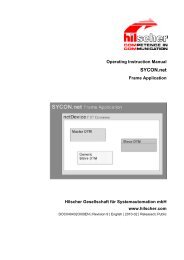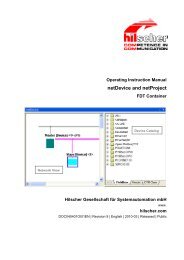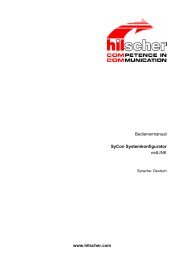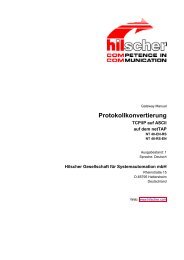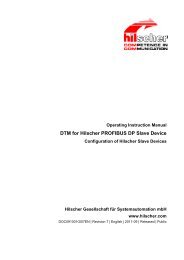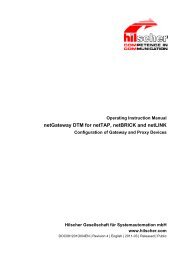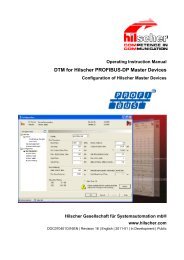CANopen Slave
CANopen Slave
CANopen Slave
Create successful ePaper yourself
Turn your PDF publications into a flip-book with our unique Google optimized e-Paper software.
Configuration Parameters 46/112<br />
4.3 Task Structure of the <strong>CANopen</strong> <strong>Slave</strong> Stack<br />
The illustration below displays the internal structure of the tasks which together represent the<br />
<strong>CANopen</strong> <strong>Slave</strong> Stack:<br />
Figure 6: Internal Structure of <strong>CANopen</strong> <strong>Slave</strong> Firmware<br />
The dual-port memory is used for exchange of information, data and packets. Configuration and IO<br />
data will be transferred using this way.<br />
The user application only accesses the task located in the highest layer namely the AP task which<br />
constitutes the application interface of the <strong>CANopen</strong> <strong>Slave</strong> stack.<br />
The triple buffer mechanism provides a consistent synchronous access procedure from both sides<br />
(DPM and AP task). The triple buffer technique ensures that the access will always affect the last<br />
written cell.<br />
<strong>CANopen</strong> <strong>Slave</strong> |<br />
DOC070901API06EN | Revision 6 | English | 2010-06 | Released | Public © Hilscher, 2006-2010


